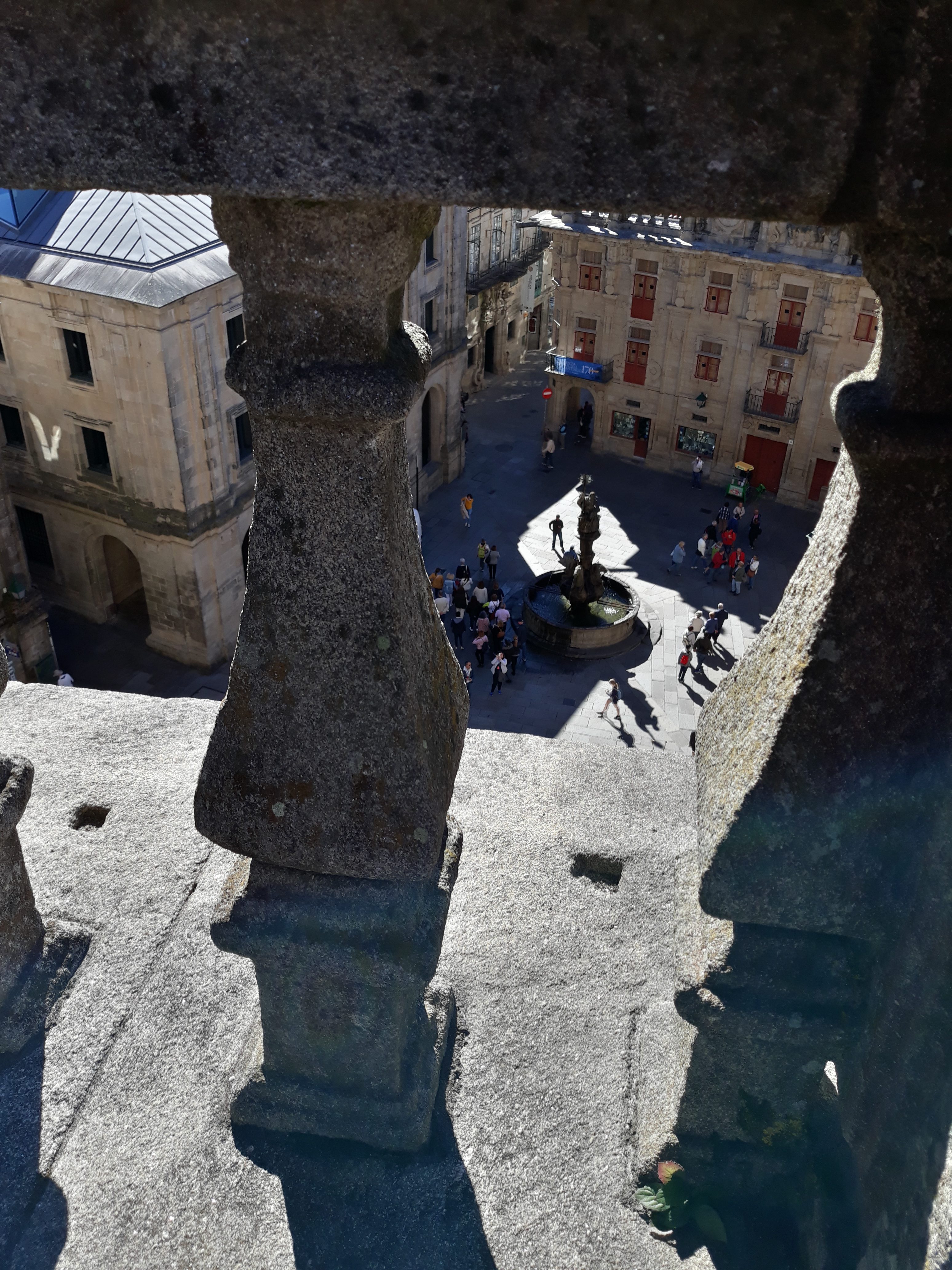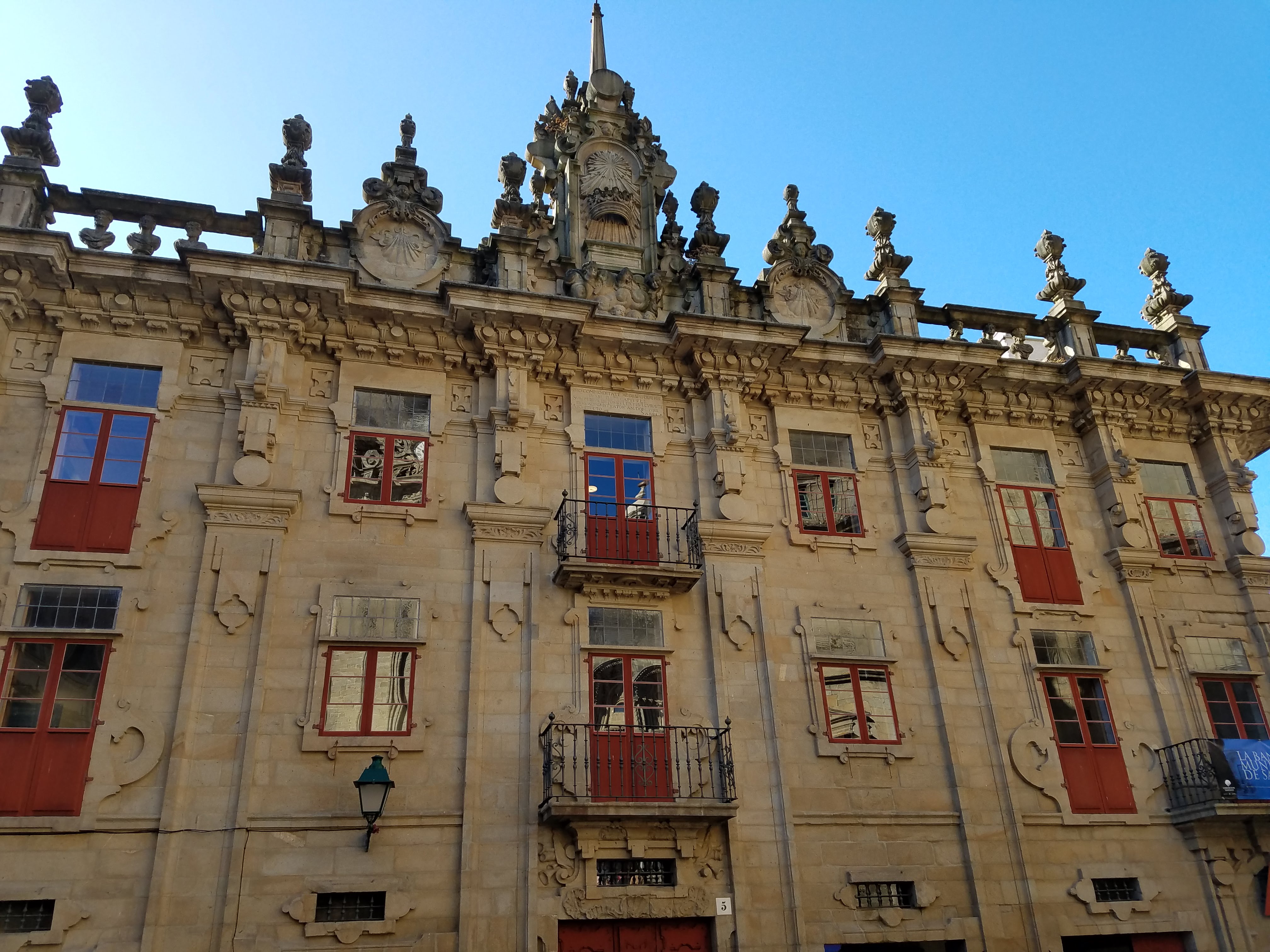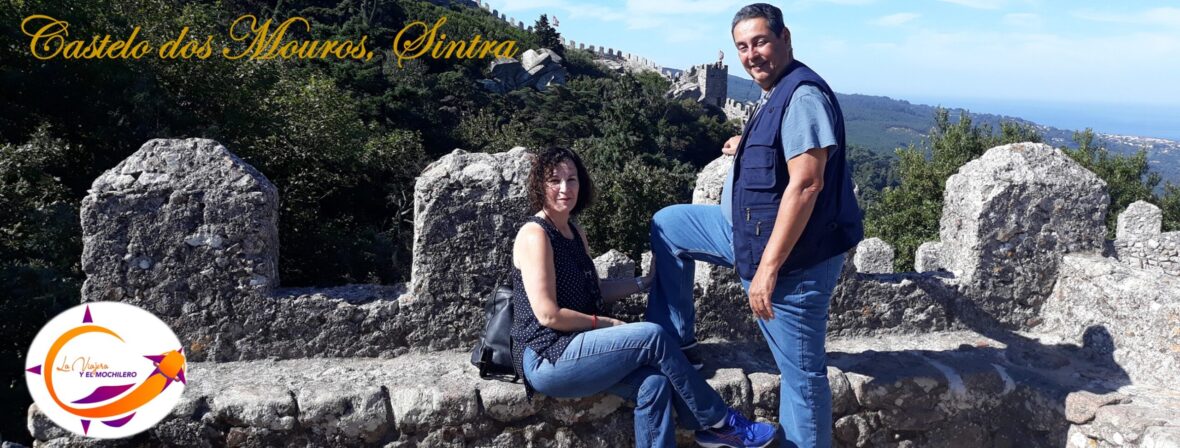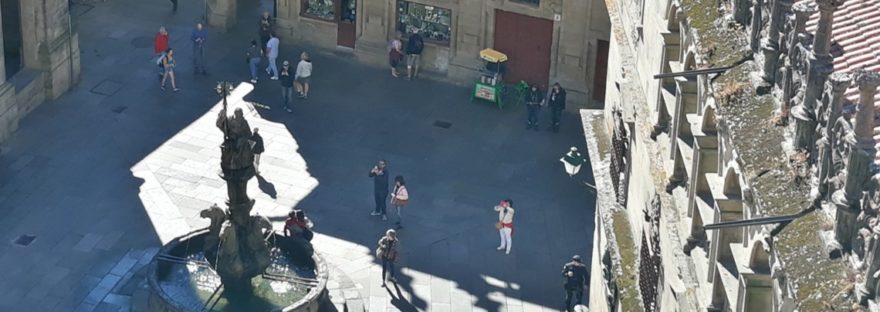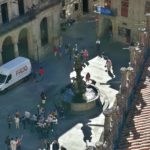 During the Middle Ages, it was in the square that was located in front of the south facade of the Cathedral of Santiago de Compostela and the Cloister where the merchants met to sell their works made in silver. Hence the name Plaza de la Prateria or Platería; Silversmith’s Plaza.
During the Middle Ages, it was in the square that was located in front of the south facade of the Cathedral of Santiago de Compostela and the Cloister where the merchants met to sell their works made in silver. Hence the name Plaza de la Prateria or Platería; Silversmith’s Plaza.
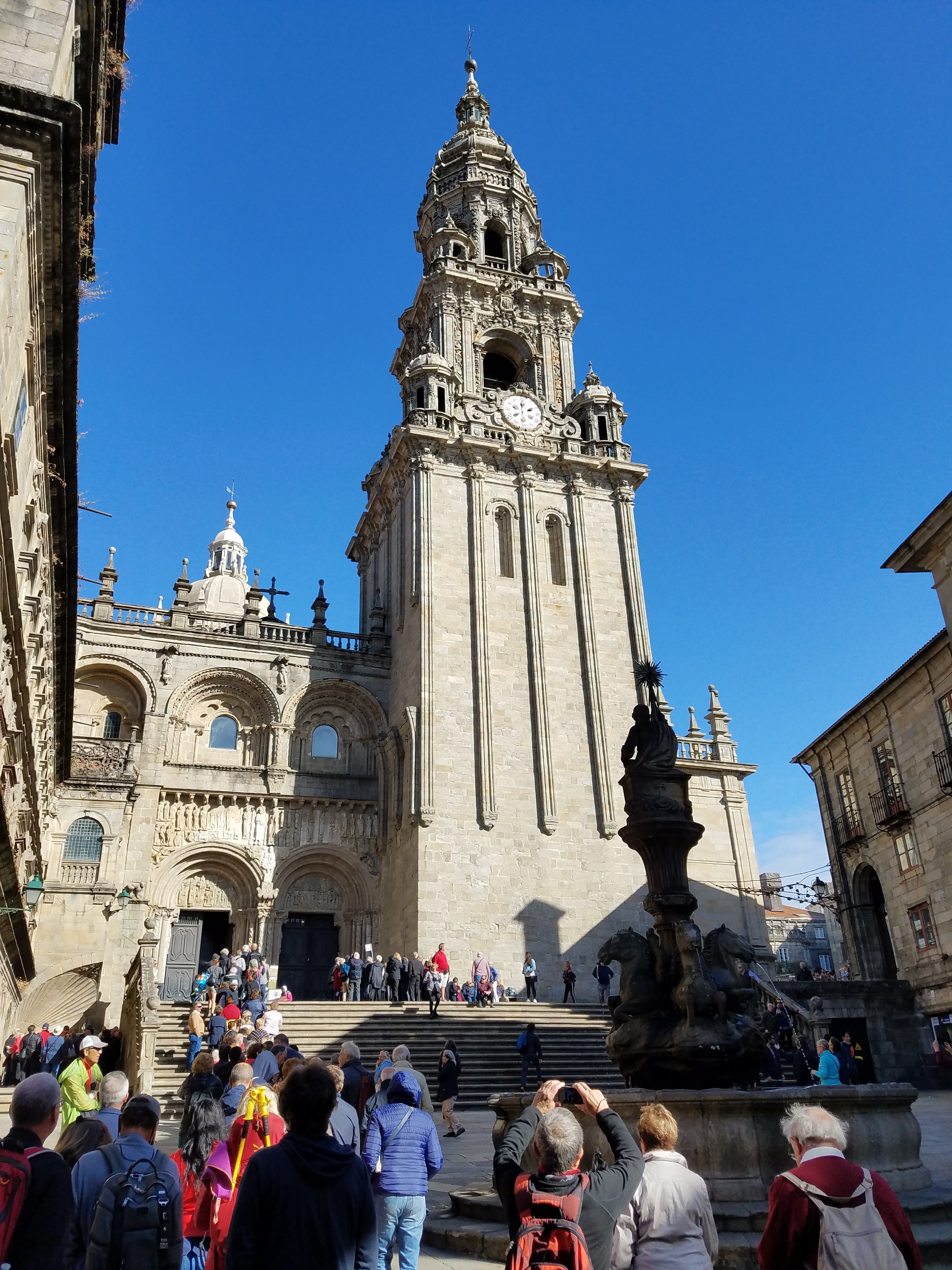
The silversmiths were located in the bottom section of the cloister. For this reason, the Facade of the Praterias is the name given to this entrance of the cathedral. From it you can see the Clock Tower of the Cathedral.
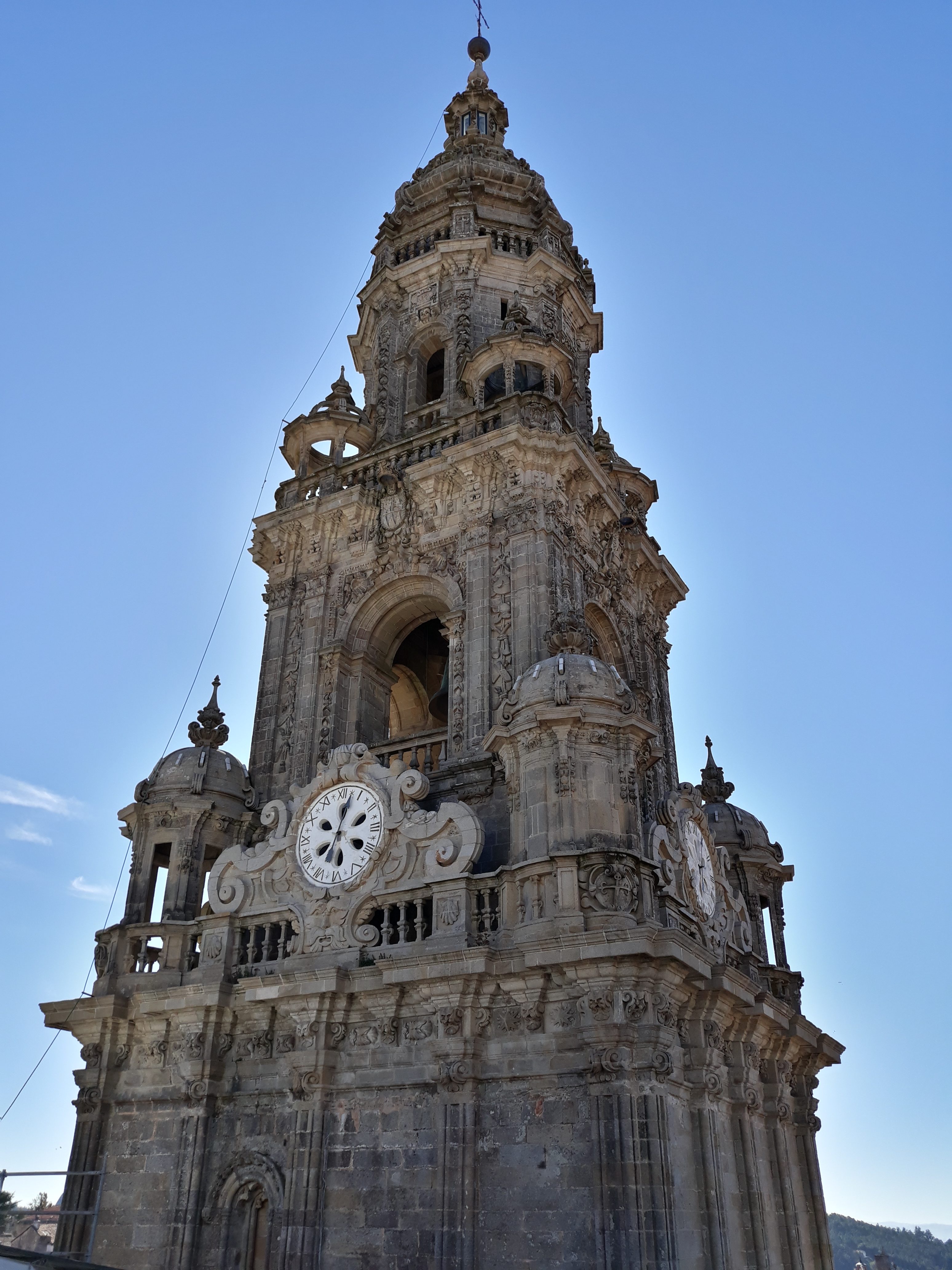
This small square has the Fountain of the Horses of Baroque style, it was built in 1825 by J. Pernas, replacing an old fountain. It is the only fountain to be found in any the squares that surround the Cathedral.
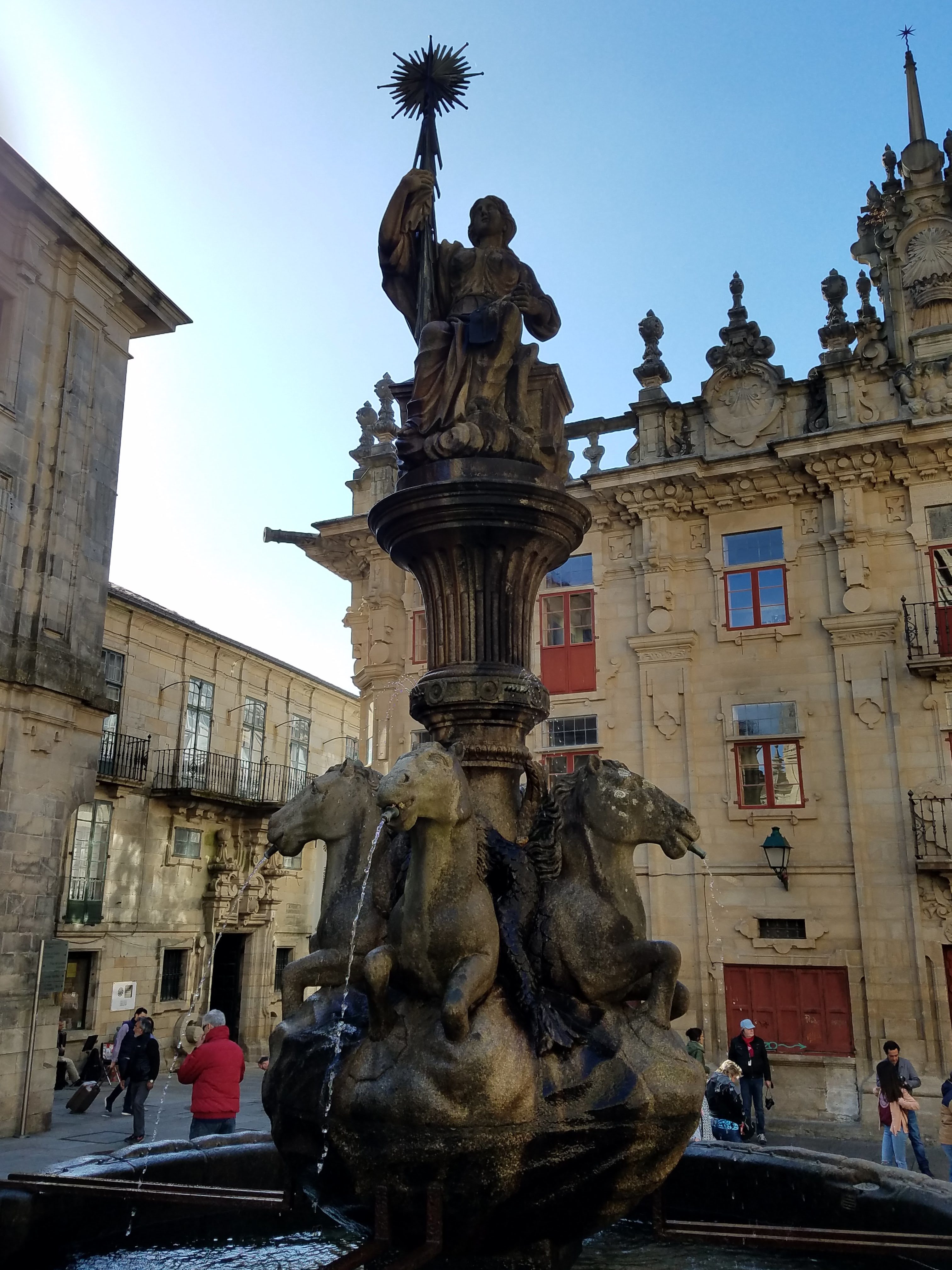
Although the fountain is known as the Fountain of Horses, we find it curious that it really consists of four hippocampi, which according to Greek mythology was a combination of horse and fish. It is observed that from the midst of these marine horses there emerges a female figure that bears the Star of Compostela in her raised arm.
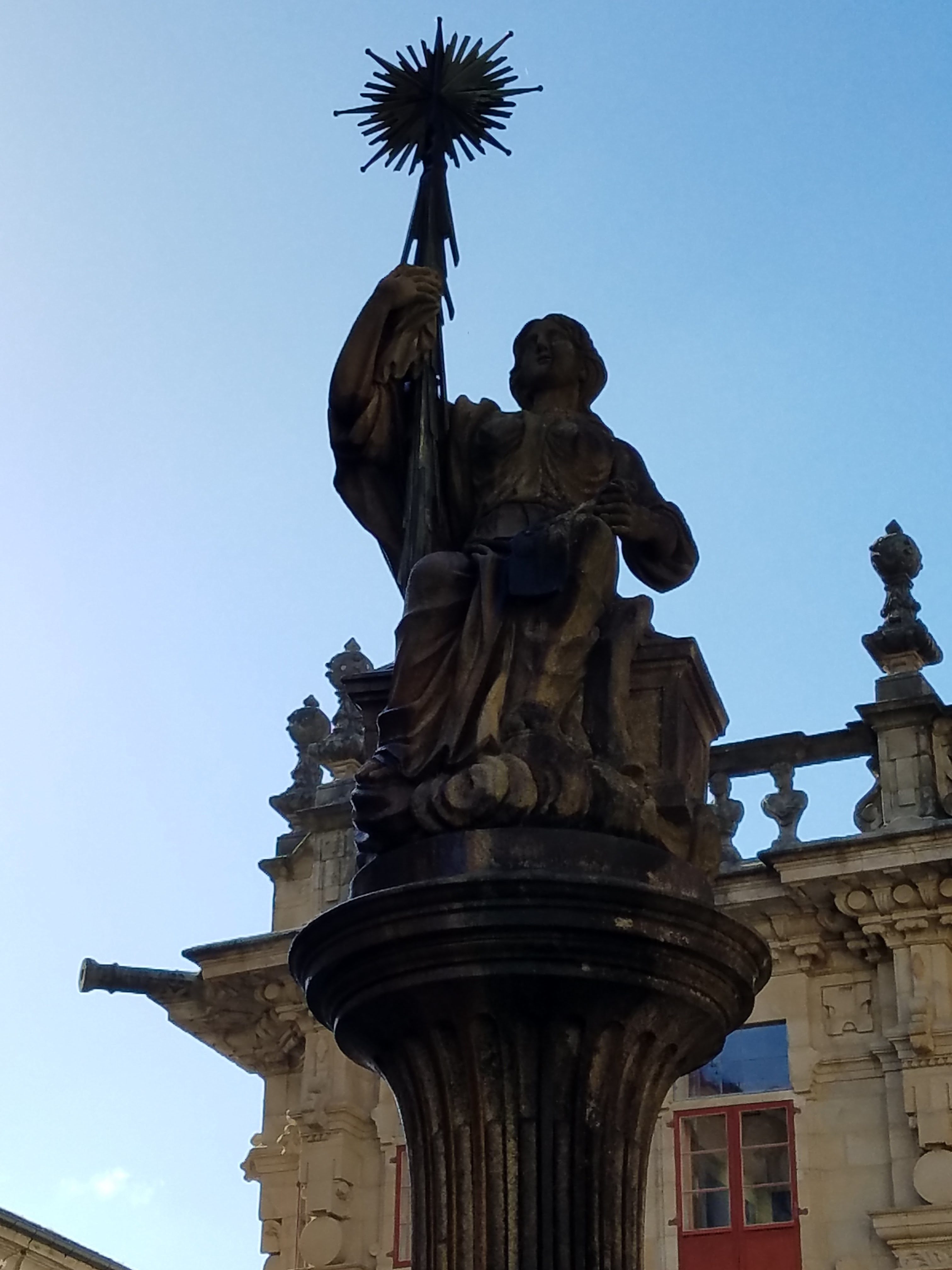
According to the legend, this is the star that lead to the discovery of the tomb of St. James the Apostle.
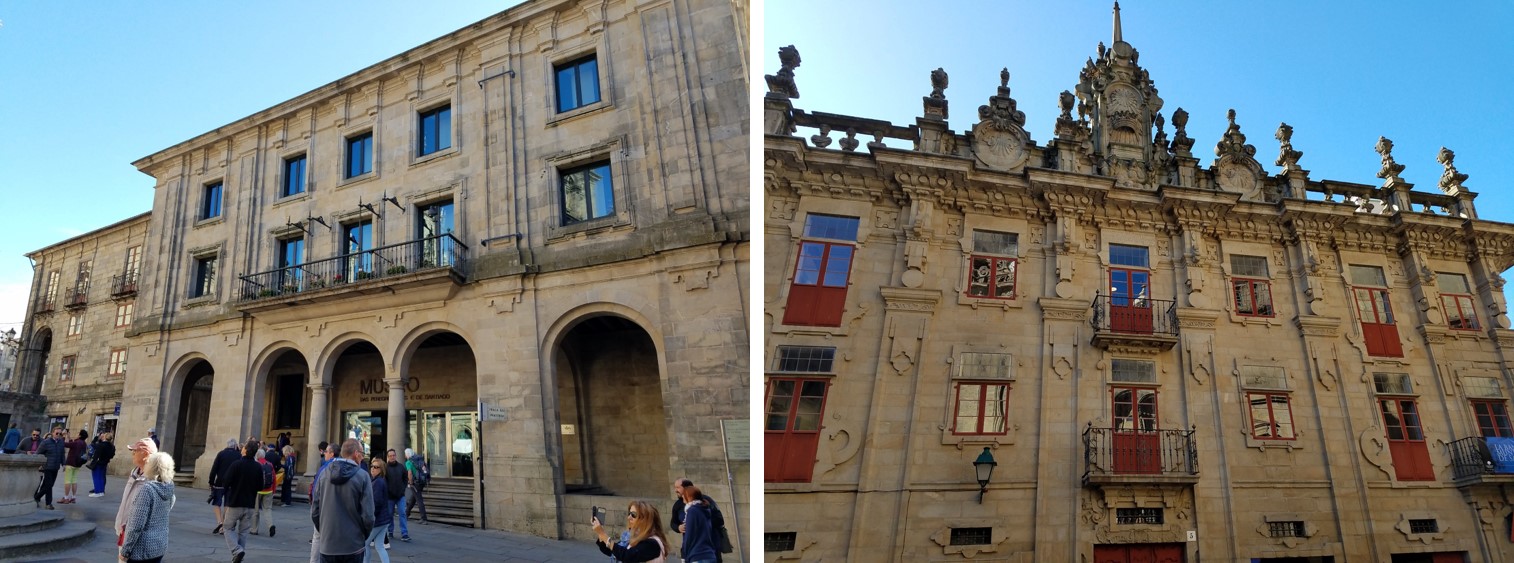
Around the Plaza de la Platería we can find the Casa del Cabildo and the Museo de Peregrinaciones. Interestingly, the Casa del Cabildo is a structure only 3 meters deep.
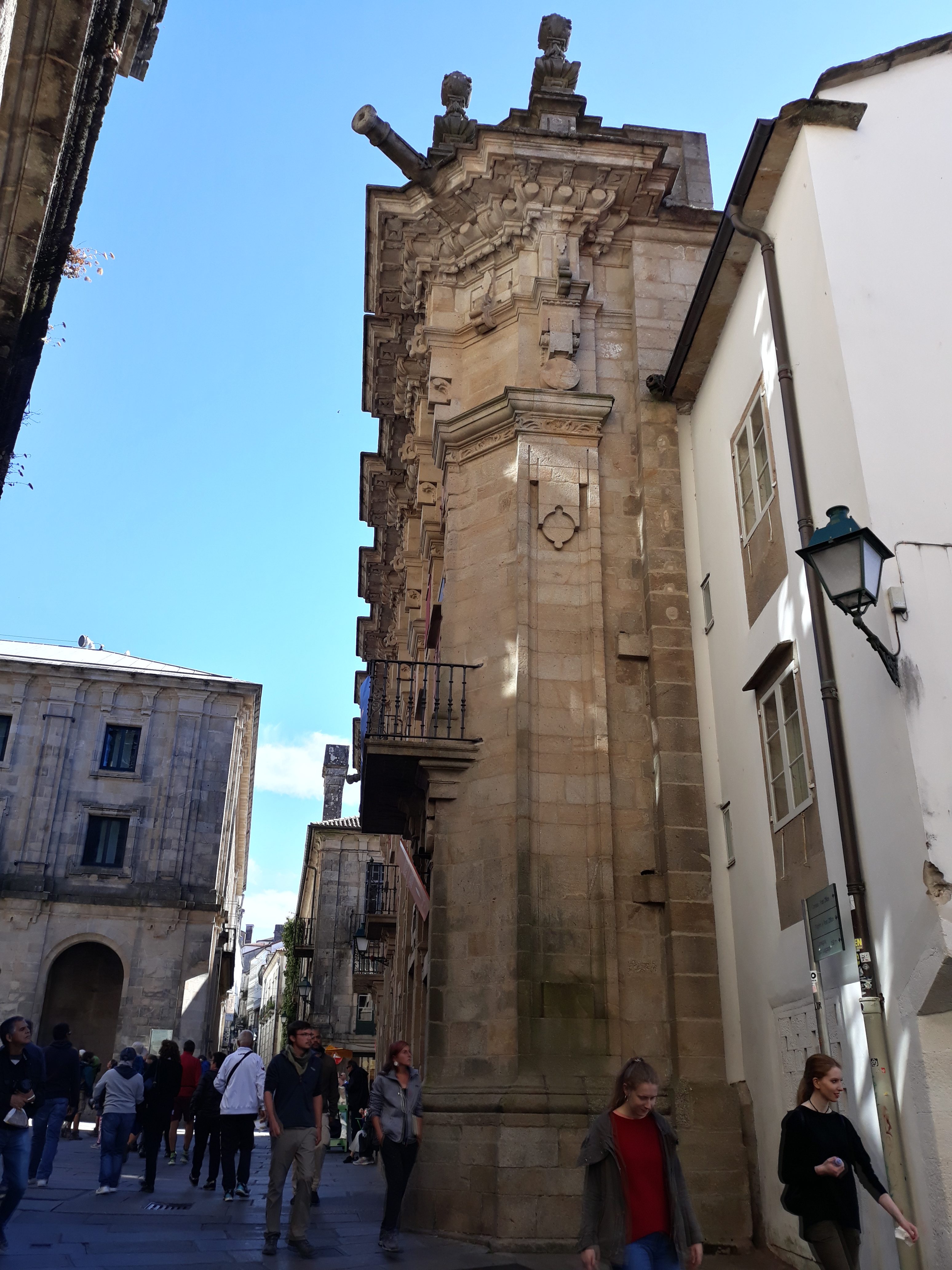
This façade, or curtain made of stone, was built for aesthetic reasons, giving it a front to the side of the adjacent building and giving it a view towards the square. The intention of the architect Fernandez Sarela was to close the square almost theatrically. Baroque compostelano style plates which consist of geometric figures are superimposed on the outer walls of the structure.
